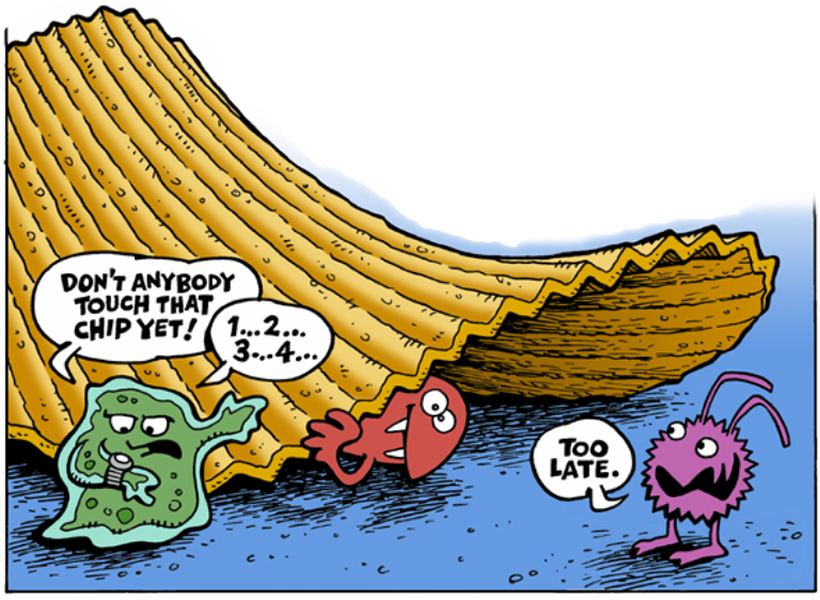
A piece of food will pick up more bacteria the longer it spends on the floor. When you feel the urge or temptation to apply the 5 second rule to food you’ve dropped on the floor, think about these two facts before eating it:

By larry greenemeier on march 25, 2014.
5 second rule with food. The short answer is yes. The 5 second rule pulls you out of your head and gets you to take action. So food left there for 5 seconds or less will probably collect fewer bacteria than food sitting there for a longer time.
But fast may not be fast enough. When you feel the urge or temptation to apply the 5 second rule to food you’ve dropped on the floor, think about these two facts before eating it: That means food left on the floor for an instant.
There appears to be no scientific consensus on the general applicability of the rule, and its origin is unclear. Bacteria can attach to your food as soon as it hits the floor. Seconds according to quantum mechanics, food that has only been on the floor for 1 second has not actually touched the floor at all.
A piece of food will pick up more bacteria the longer it spends on the floor. The idea that if you save your food fast enough, it is still ok to eat goes by many names: The less time food spends on the floor, the fewer bacteria it picks up.
However, the type of food and the type of surface greatly impacted the bacteria transfer. Researchers at aston university’s school of life and health sciences found that, “food retrieved just a few seconds after being dropped. With so many meals consumed at home these days, there are bound to be mishaps, such as a spilled glass of milk or a sandwich dropped on the floor.
How i learned to stop worrying and love floor food! As one might expect, different foods picked. The confusion lies in the fact that some environments and surfaces are safer than others.
Moisture drives the transfer of bacteria from surface to food; Don’t worry about the antibacterial soap ban; Many of us follow this rule without knowing whether it is true and supported by scientific evidence, or whether it is just a myth passed down through generations.
That is, you’re turning action into a habit. For those who haven’t heard of the rule, it states that a piece of food that falls onto the floor is safe to eat if it is picked up within 5 seconds. At the same time, the more that you act, the more that you create a bias toward action.
There may be some actual science behind this popular deadline for retrieving grounded goodies. You will use agar plates to test if picking up fallen food from the ground in five seconds prevents the. Meredith agle, a doctoral candidate, claims that bacteria on the ground transfers onto food in less than five seconds, making this myth is an old wive’s tale that has no real truth behind it.
Some say we can credit famous chef julia child for cementing a. To find out if that’s true, we start with a hypothesis — a statement that can be tested. Kind of common sense, right?
This experiment will evaluate whether there is any truth to this theory. You may be fast but you may not be. Our entirely scientifically accurate* guide to the famous '5 second rule' of picking food up off the floor.
By larry greenemeier on march 25, 2014. Foodborne illnesses, from salmonella and other bacteria, can cause nausea, vomiting or diarrhea and can even be deadly. “there is no ‘safe’ amount of time when no.
Food retrieved just a few seconds after being dropped is less likely to contain bacteria than if it is left for longer periods of time. The wetter the food, the higher the risk of transfer. Each surface was coated with the same amount of bacteria and allowed to dry before food was exposed to the surface for 1, 5, 30, or 300 seconds.